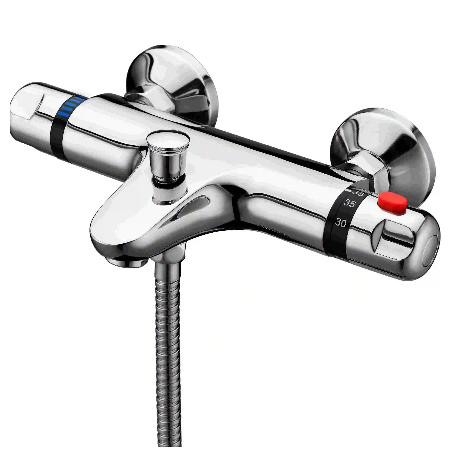Essential Guide to Choosing Premium Bath Pillars for Your Bathroom
Creating the perfect bathroom involves careful consideration of every fixture, and the bath pillar stands as a crucial element that combines functionality with aesthetic appeal. These essential fixtures not only deliver water but also serve as statement pieces that can elevate your bathroom's overall design. Whether you're renovating your existing bathroom or building a new one, selecting the right bath pillar requires understanding various factors that influence both its performance and longevity.
Modern bath pillars have evolved significantly from their traditional counterparts, offering innovative features while maintaining their classic appeal. The market today presents an extensive range of options, from minimalist contemporary designs to ornate traditional styles, each crafted to meet specific needs and preferences. Making an informed decision about your bath pillar selection can significantly impact your daily bathroom experience and the long-term value of your investment.
Understanding Bath Pillar Construction and Materials
Premium Material Options for Durability
The foundation of any quality bath pillar lies in its construction materials. Solid brass remains the gold standard for bath pillar construction, offering exceptional durability and resistance to corrosion. This material ensures your fixture maintains its functionality and appearance even after years of daily use. Chrome-plated brass provides an additional layer of protection while delivering a sleek, modern aesthetic that complements various bathroom styles.
Alternative materials like stainless steel and zinc alloys have also gained popularity in recent years. While these options often come at a lower price point, they can still provide reliable performance when manufactured to high standards. However, it's essential to verify the quality of these materials, as inferior alternatives may compromise the longevity of your bath pillar.
Internal Components and Mechanism Quality
Beyond the external materials, the internal workings of a bath pillar determine its operational efficiency and lifespan. Ceramic disc cartridges have become increasingly prevalent, replacing traditional rubber washers in modern designs. These cartridges offer superior control over water flow and temperature while requiring minimal maintenance throughout their lifetime.
The quality of seals and O-rings also plays a crucial role in preventing leaks and ensuring smooth operation. Look for bath pillars that feature high-grade EPDM or silicone seals, as these materials provide excellent resistance to both hot and cold water while maintaining their integrity over time.
Design Considerations for Bath Pillar Selection
Aesthetic Integration with Bathroom Theme
Your bath pillar should harmonize with your bathroom's overall design theme. Contemporary bathrooms often benefit from sleek, minimalist bath pillars with clean lines and modern finishes. These designs typically feature geometric shapes and sophisticated metallic finishes that complement current interior trends.
For traditional or period-style bathrooms, classical bath pillar designs with ornate details and vintage-inspired finishes might be more appropriate. Consider options with cross handles or lever designs that echo historical bathroom fixtures while incorporating modern engineering principles.
Practical Design Elements
Functionality should never be sacrificed for aesthetics. The height and reach of your bath pillar must be practical for your specific bathtub or basin configuration. Consider the space between the fixture and the bath edge, ensuring comfortable access for daily use and cleaning.
Handle design also merits careful consideration, particularly for households with elderly members or children. Lever-style handles typically offer easier operation compared to traditional cross handles, though both styles can be equally effective when properly designed and installed.

Installation and Maintenance Requirements
Professional Installation Considerations
While some homeowners might be tempted to attempt DIY installation, professional fitting of bath pillars is highly recommended. Proper installation ensures optimal performance and prevents potential issues like leaks or improper alignment. A qualified plumber can also verify the compatibility of your chosen bath pillar with your existing plumbing system and water pressure.
The installation process should include proper sealing and securing of all components, along with testing for smooth operation and leak prevention. Professional installers can also provide valuable advice on maintenance requirements specific to your chosen model.
Long-term Maintenance Strategies
Regular maintenance extends the life of your bath pillar while preserving its appearance and functionality. Develop a routine cleaning schedule using appropriate products that won't damage the finish or internal components. Avoid abrasive cleaners that might scratch or dull the surface, opting instead for manufacturer-recommended cleaning solutions.
Periodic inspection of seals and connections helps identify potential issues before they become significant problems. Pay attention to changes in water flow or unusual noises that might indicate maintenance is needed. Addressing minor issues promptly can prevent more extensive repairs later.
Frequently Asked Questions
What is the average lifespan of a quality bath pillar?
A well-maintained bath pillar constructed from premium materials typically lasts 15-20 years. However, factors such as water quality, usage patterns, and maintenance regularity can significantly impact its longevity. Regular maintenance and proper installation can help maximize your fixture's lifespan.
How often should bath pillars be serviced?
Professional servicing is recommended annually, though this may vary depending on usage and water quality. Regular cleaning should be performed weekly, while more thorough maintenance checks can be conducted quarterly to ensure optimal performance and prevent potential issues.
Are expensive bath pillars worth the investment?
Higher-priced bath pillars often justify their cost through superior materials, better internal mechanisms, and longer warranties. While budget options might seem attractive initially, premium fixtures typically offer better longevity, reliability, and performance, potentially proving more cost-effective over time.
Can bath pillars be repaired rather than replaced?
Many bath pillars can be repaired, particularly those from reputable manufacturers who provide replacement parts. Common issues like worn seals or cartridges can often be fixed by a professional plumber. However, if the main body shows significant wear or damage, replacement might be more cost-effective than repairs.

